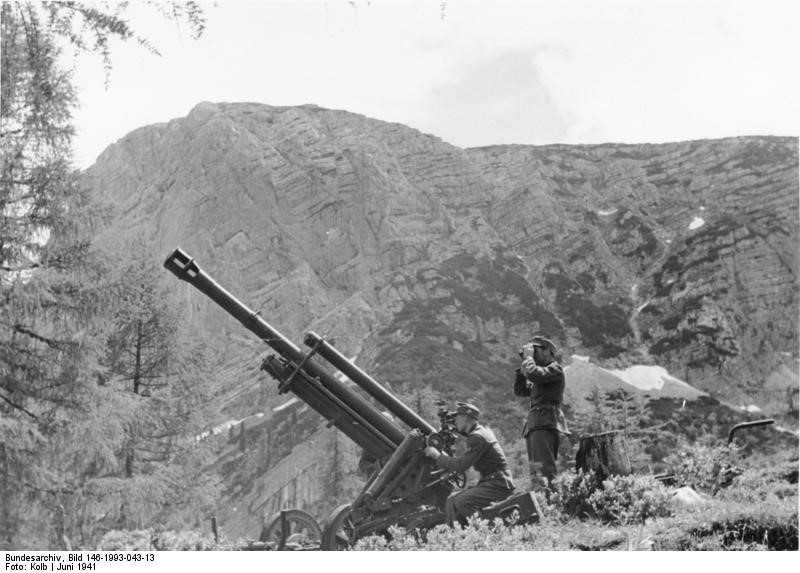
| Year | 1942 |
| Weapon Type | Heavy Mountain Howitzer |
| Origin & Designer | Austria/Böhler |
| Numbers Produced | 420 |
| Crew | 7 |
| Calibre | 105mm (105x284) |
| Elevation | -5° to +70° |
| Traverse | 50° |
| Breech | Horizontal Sliding Block |
| Recoil | Hydropneumatic |
| Gun Sight | [@gun_sight] |
| Gun Mount | [@gun_mounts] |
| Carriage | Split Trail |
| Trailers | [@trailers] |
| Gun Shield | [@gun_shield] |
| Armoured Plate | [@armoured_plate] |
| Barrel Length | 3.440mm (L/32) |
| Overall Length | 5.63m |
| Width | 1.37m |
| Height | 1.49m |
| Weight | Weight in Traction: 2.785 kg Weight in Action: 1.850 kg |
| Round Weight | Gr.38 (HE) 14.50 kg |
| Muzzle Velocity | 565 m/s |
| Feed | [@feed] |
| Magazine Capacity | [@magazine_capacity] |
| Practical Rate of Fire | 4 r.p.m. |
| Rate of Fire | [@rate_of_fire] |
| Maximum Rate of Fire | 6 r.p.m. |
| Maximum Ceiling | [@maximum_ceiling] |
| Maximum Ground Range | [@maximum_ground_range] |
| Maximum Range | 12.625m |
| Armour Penetration | [@armour_penetration] |
| Traction | Pack (Nine loads) & Motorised (Kettenkrad Sd.Kfz 2) |
| Variants | [@variants] |
| Notes | The GebH 40 was the heaviest mountain gun ever to see service in World War Two and was designed to supplement the lighter le.GebG 36. It could be towed fully assembled in one load or broken down into four loads and towed by a Kettenkrad or broken down into five loads and carried by animal transport. It was issued to Gebirgs-Artillerie-Regiments. |